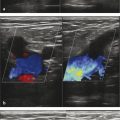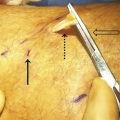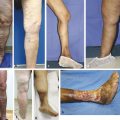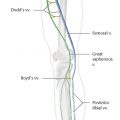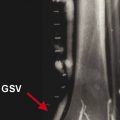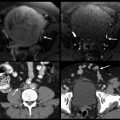Lower Extremity Vein Mapping with Duplex Ultrasound Duplex ultrasonography (duplex US) is a widely accepted initial imaging modality for evaluation of varicose vein disease in the legs. It is also the imaging method of choice in the assessment of recurrent varicose veins and chronic venous insufficiency. 1 The risk of recurrence of varicose vein disease is directly related to the accuracy of preoperative diagnosis and effective image-guided therapies. 2 The variability of venous anatomy is high, with significant variations occurring in almost 25% of patients with uncomplicated varicose veins and even more frequently in recurrent disease. 3 Duplex US can noninvasively and accurately evaluate leg veins and provide crucial information about location, degree, and patterns of venous reflux. A schematic diagram of the whole leg displaying the duplex US findings (duplex mapping) is essential for treatment planning in lower extremity venous disease. The example presented here is simple and offers a clear, comprehensible visual display of the venous anatomy and function in the leg, allowing the planning of appropriate therapy ( ▶ Fig. 4.1). Fig. 4.1 Venous mapping worksheet. Example of a simple vein map of the lower extremities showing bilateral great and small saphenous veins. The numbers indicate the diameters of the veins at different levels in millimeters. Dotted lines represent a perforating vein in the left thigh, tortuous lines represent a varicose vein in the left calf, and arrows represent venous reflux in the left GSV. In normal circumstances, the superficial venous system drains the subcutaneous tissues and periodically empties into the deep system via perforating veins. Flow direction should always be cephalad and superficial to deep. The veins contain a series of valves along their course, preventing retrograde flow back down the leg ( ▶ Fig. 4.2). If functioning properly, it is considered a competent valve. If blood is able to pass backward through the valve, it is deemed incompetent. Depending on the extent of incompetence, this backflow will fill the superficial veins, making them tortuous and dilated (varicose veins). Fig. 4.2 Transverse ultrasound image of the great saphenous vein showing the venous valve (arrow). The duplex ultrasound examination for venous mapping should demonstrate both the anatomic patterns of veins and abnormalities of venous blood flow in the lower extremities. 4 The following data should be recorded: Incompetent saphenous junctions, and their locations and diameters. The extent of reflux in the saphenous veins of the thighs and legs and their diameters. The number, location, diameter, and function of incompetent perforating veins. Other relevant veins that show reflux. The source of filling of all superficial varices if not from the veins already described. Veins that are hypoplastic, atretic, or absent, or that have been removed. The state of the deep venous system including competence of valves and evidence of previous venous thrombosis. Most patients undergoing duplex ultrasound to investigate superficial, deep, and perforating veins are being considered for treatment of varicose veins. Information provided by the duplex mapping will usually have a significant impact on whether treatment will be offered and the type of treatment considered most appropriate. Understanding the anatomy of the venous system is crucial to the correct evaluation and appropriate treatment of venous disorders. The veins of the lower extremities are divided into three systems: superficial, deep, and perforating venous systems. These are located in two main compartments: the superficial compartment and the deep compartment, which are, respectively, situated above and below the muscle fascia. The deep veins are the primary route for returning blood to the heart. They collect the venous blood from all the draining muscular and superficial veins. Ultrasound protocols usually include the following lower extremity deep veins 5: Common femoral vein (CFV). Femoral vein (FV). Popliteal vein (POPV). Anterior tibial vein. Posterior tibial vein (PTV). Peroneal veins (PerVs). There are two main superficial veins draining the subcutaneous tissue of the lower extremity 6, 7, 8: The great saphenous vein (GSV) runs from the medial malleolus, up the medial aspect of the leg and thigh, draining into the CFV at the groin through the saphenofemoral junction (SFJ). The small saphenous vein (SSV) runs up the posterior midline of the calf. It may drain into the proximal POPV above the knee crease as the saphenopopliteal junction (SPJ). Commonly, however, it may continue up the posterior thigh as the Giacomini vein. This will terminate either into the mid/distal FV or ascend to drain into the proximal GSV. SFJ ( ▶ Fig. 4.3). The termination of the GSV into the CFV in the groin. It is the primary source of venous incompetence and varices of the lower extremity. SPJ ( ▶ Fig. 4.4). The termination of the SSV into the POPV in the popliteal fossa. The SPJ is absent in 15 to 20% of the population, with the SSV continuing up posteriorly as the thigh extension of the SSV and Giacomini vein. 9 The SPJ is located in most cases (98%) in the upper lateral quadrant of the popliteal fossa. The remaining junctions are medial/lateral, often via a gastrocnemius vein. 10 Fig. 4.3 Transverse ultrasound image at the level of the saphenofemoral (between “+” signs). It represents the confluence of the great saphenous vein (GSV) with the common femoral vein (CFV). Fig. 4.4 Longitudinal ultrasound image at the level of the saphenopopliteal junction (arrow), representing the confluence of the small saphenous vein (SSV) with the popliteal vein (POPV). Duplex US is the primary diagnostic tool used to evaluate patients with superficial venous insufficiency. Duplex US is an inexpensive, portable, and reproducible means of simultaneously assessing both the venous anatomy and physiology. 11 As stated previously, duplex US can localize and specify the source of the venous problem to provide a map to help select the best treatment and evaluate outcome for the venous treatments (discussed later). As venous reflux commonly affects both lower extremities, it is advised that both extremities be scanned at the initial investigation, although this is dependent on the resources of the diagnostic service. The superficial and deep venous systems should be evaluated. The main indications are as follows 4, 12, 13, 14, 15, 16: Patients with uncomplicated great saphenous territory varicose veins. Patients with uncomplicated small saphenous territory varicose veins. Patients with nonsaphenous varicose veins (related to pelvic/perineal vein reflux or isolated lateral thigh varicose veins). Patients with recurrent varicose veins. Duplex scanning is considered to be essential to establish the complex anatomy and flow dynamics of recurrent varices to show whether surgery or endovenous treatment is appropriate. Patients with chronic venous disease with complications. Duplex scanning is considered to be essential to assess the involvement of the deep and superficial venous systems to predict the likely outcome after treating superficial disease alone and to select appropriate patients for deep venous reconstruction. Patients undergoing surveillance after treatment. This may be used to assess the outcome of therapy and for early detection of recurrence. Patients with venous malformations. Duplex US may be used initially to investigate and provide good management for vascular malformations. The investigation provides anatomic information about the extent of the malformation and its relationship to other vessels in the affected extremity. It may also be used to guide treatment of malformations by percutaneous therapy. It is frequently used before further investigation with magnetic resonance imaging and angiography. A color duplex ultrasound machine is required for this investigation. A high-frequency linear array transducer of 7 to 12 MHz is appropriate for lower extremity investigation to obtain good quality images of the superficial veins. A curvilinear array transducer of 3.5 to 5 MHz can be useful for very large or edematous extremities. Superficial veins normally lie 1 to 3 cm below the skin. They are usually imaged in the longitudinal view with the proximal end of the veins to the left of the screen, and in the transverse view with the lateral aspect of the right extremity and medial aspect of the left extremity shown to the left of the screen. The focal zone for the transducer should be set at an appropriate level to obtain the best B-mode image of the vein under investigation. Gain and dynamic gain control should be set to optimize the image so that the lumen of the vein should be dark (anechoic) in the absence of acute or chronic thrombosis and very slow flow, but to allow echoes from thrombus to be seen from within the lumen, when present. 4 The use of slow flow settings is recommended to optimize the machine for slow velocities seen within veins. Set the Doppler range to 5 to 10 cm/s, with the wall filter at its lowest setting. It is best to increase the Doppler gain to show a small amount of “noise” in the color or pulsed Doppler signal to ensure maximum sensitivity of the system. It is advisable to increase the Doppler range and decrease the color gain in patients with high venous flow to avoid significant color artifact. It is conventional to use blue to represent antegrade venous flow toward the heart in the color mode and red for the reverse (venous reflux) direction ( ▶ Fig. 4.5). 4 Fig. 4.5 Longitudinal ultrasound images of the great saphenous vein (GSV) at the level of the proximal thigh during (left image) and after augmentation (right image). Antegrade blood flow is represented in blue during augmentation followed by retrograde blood flow represented in red (venous reflux). In general, it is recommended that examination of the superficial veins should be performed with the patient standing. The horizontal position is inappropriate for detection of reflux and measurement of vein diameters. However, both the lying and standing positions have been reported in the literature. 4 Examination of calf veins can be performed with the patient in either the sitting or standing position ( ▶ Fig. 4.6). Transverse and longitudinal views of the veins should be employed in duplex ultrasound scanning of the lower extremities. The transverse view gives more precise general information regarding morphology and possible presence of endoluminal thrombus through the compression maneuver, while a longitudinal view helps to assess direction of flow and venous reflux more accurately. A Doppler angle of 45 to 60° between the transducer and vein should be used to achieve the optimum color or spectral Doppler signal ( ▶ Fig. 4.7). Fig. 4.6 Patient in standing position during ultrasound examination of the left lower extremity. Fig. 4.7 Doppler ultrasound examination of a competent proximal great saphenous vein. Spectral waveform shows antegrade blood flow with no evidence of venous reflux. Venous reflux is considered to be retrograde flow in the reverse direction to physiologic flow lasting for more than 0.5 s. 12 However, a definitive cutoff for all vein segments has not been agreed in the literature. Different methods are used to elicit reflux: Release after a calf squeeze for proximal veins or foot squeeze for calf veins. Manual compression of vein clusters. Pneumatic calf cuff deflation. Active foot dorsiflexion and relaxation. The Valsalva maneuver. This may be the preferred technique to demonstrate saphenofemoral incompetence. 19 Venous reflux is elicited by imaging the vein under investigation while applying compression to the extremity using one of the methods described. The compression is abruptly removed and the presence and duration of reflux observed ( ▶ Fig. 4.8). Pneumatic cuff deflation has been used to permit quantitative assessment of reflux. This may be the most reproducible, although some find it technically more difficult. Fig. 4.8 Assessment of venous reflux with spectral Doppler ultrasound: antegrade flow in the proximal great saphenous vein is demonstrated during compression of the calf, followed by significant venous reflux.
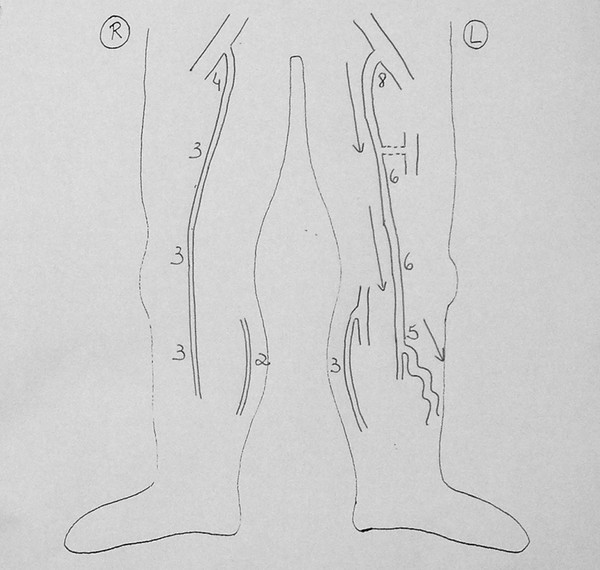
4.2 Basics of Venous Flow Dynamics

4.2.1 Duplex Ultrasound Examination for Venous Mapping
4.2.2 The Deep Veins
4.2.3 The Superficial Veins
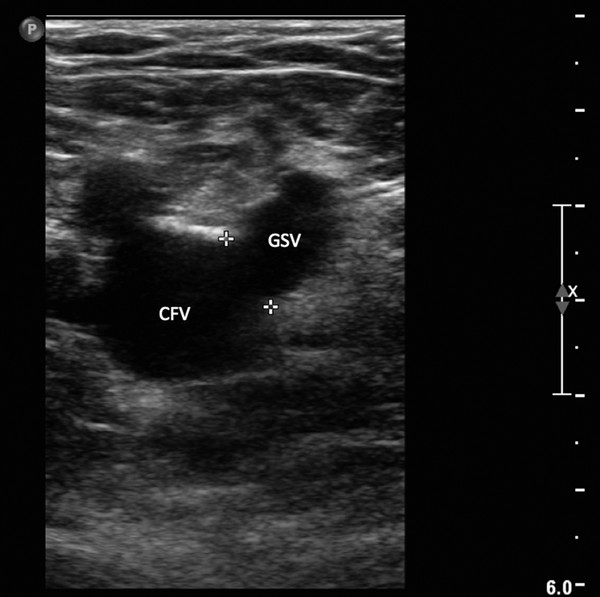
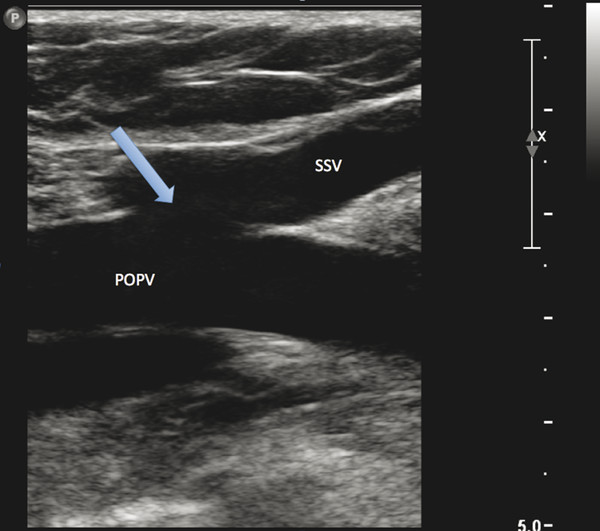
4.3 Doppler Ultrasound Exam
4.3.1 Indications for Duplex Scanning
4.3.2 Equipment Requirements and Settings
B-mode Ultrasound Settings
Pulsed-Wave Spectral or Color Doppler Settings
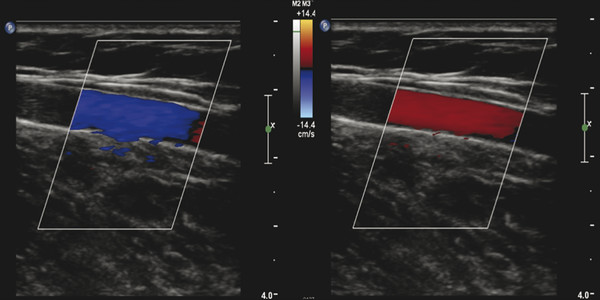
4.3.3 Patient Position and Ultrasound Probe


4.4 Examination for Reflux: Based on the Venous Duplex Consensus 4, 17, 18
4.4.1 Definition of Venous Reflux

Stay updated, free articles. Join our Telegram channel

Full access? Get Clinical Tree


